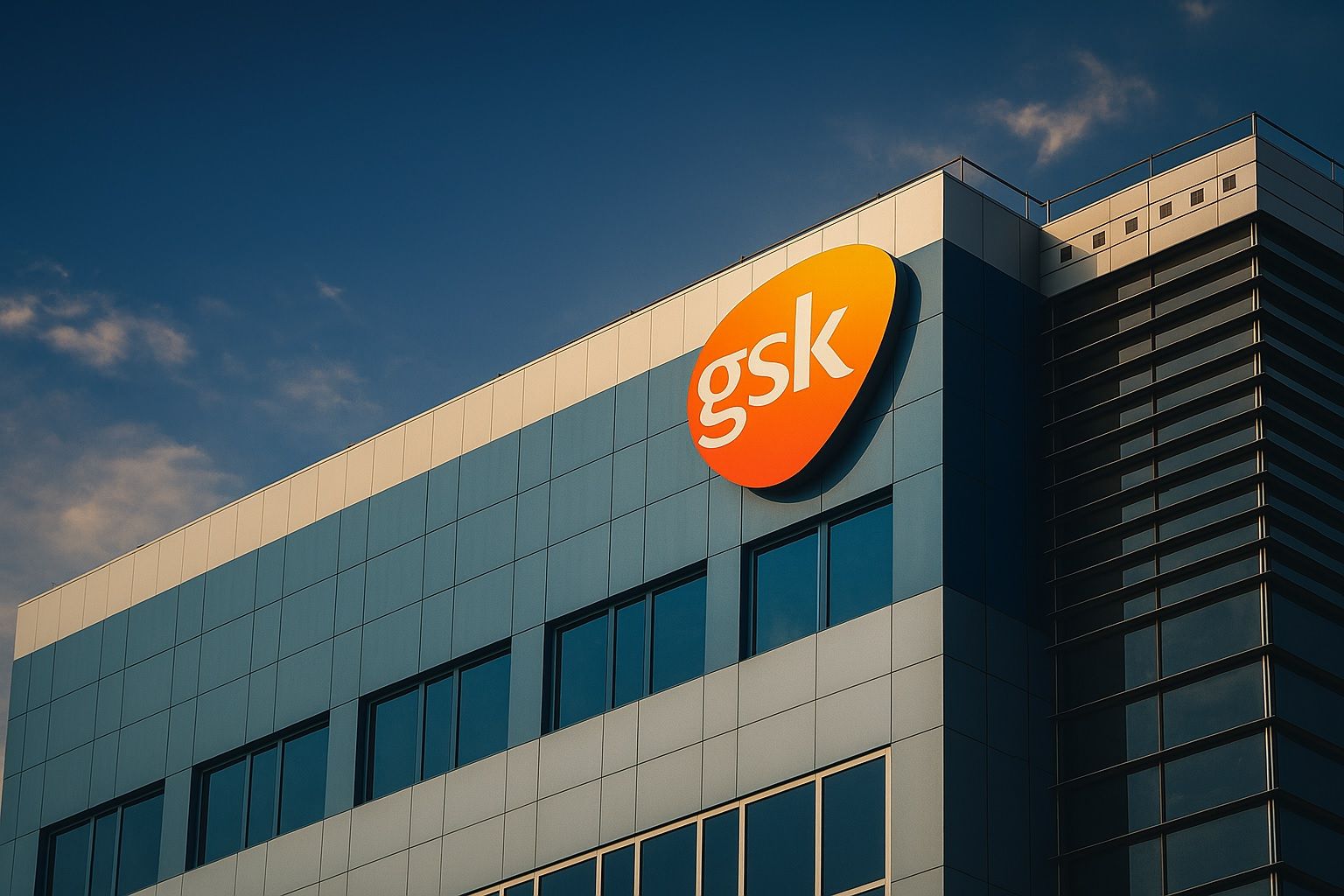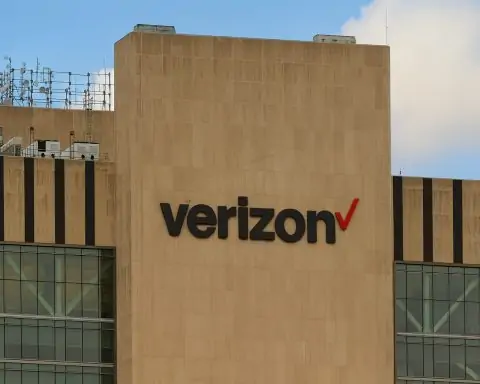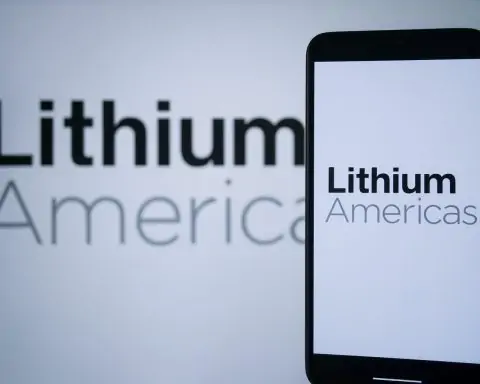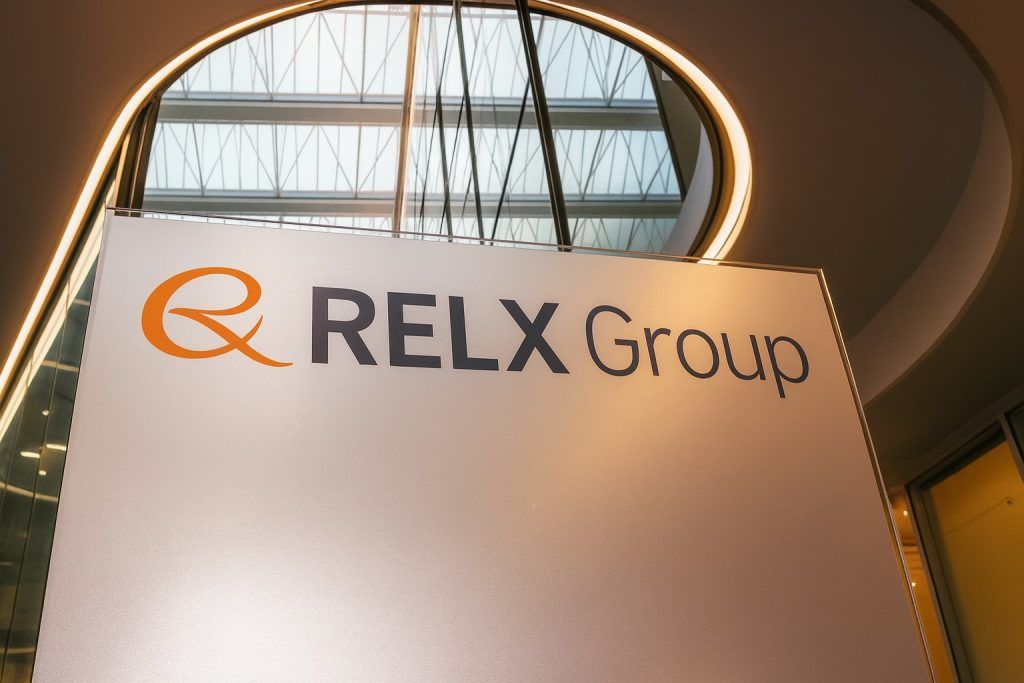As London investors get ready for the opening bell on Monday, 17 November 2025, GSK plc (LON: GSK) is entering the week in a strong but finely balanced position: the shares sit close to their 52‑week highs, the company has just gone ex‑dividend, buybacks are running hard, guidance has been upgraded, key drugs have hit major regulatory milestones – and legacy Zantac litigation is easing but not gone.
Here’s a concise but detailed look at what matters for GSK’s share price before the market opens.
1. Where GSK’s share price stands right now
Closing levels heading into Monday
- London listing (GSK.L)
- GSK shares closed at 1,784p on Friday 14 November 2025, down about 1.46% on the day, having opened at 1,805.5p and traded between 1,777p and 1,809.5p. [1]
- Over the last week, the stock has slipped modestly from above 1,820p but remains close to its recent 52‑week high around 1,826p, set earlier in November. [2]
- New York ADR (NYSE: GSK)
With London closed over the weekend, the last U.S. ADR move is often watched as an informal sentiment check going into the next LSE session – though FX moves and broader risk appetite in Europe can easily override that signal at Monday’s open.
12‑month and year‑to‑date performance
Different data providers put slightly different numbers on it, but they all tell the same story:
- GSK’s London shares are up roughly 35–40% over the past 12 months, with Investing.com showing about +37% 1‑year performance. [5]
- A recent Nasdaq/Motley Fool piece notes the stock is up about 44% in 2025 year‑to‑date, reflecting a strong recovery phase. [6]
That makes GSK one of the better‑performing large‑cap pharmas this year and a notable contributor to the FTSE 100’s gains.
Position in the FTSE 100
- GSK accounts for roughly 3% of the FTSE 100 index by weight, depending on the specific index provider and date. [7]
- Over the last year, the FTSE 100 is up around 18–19%, meaning GSK has outperformed the wider UK blue‑chip benchmark. [8]
For index‑tracking and “UK defensive” portfolios, GSK is now a more influential driver than it was a couple of years ago.
2. Fresh from Q3: earnings and upgraded guidance
The single biggest fundamental driver of GSK’s latest leg higher was its third‑quarter 2025 earnings and a notable upgrade to full‑year guidance, published on 29 October. [9]
Headline Q3 2025 numbers
GSK’s Q3 release and subsequent coverage highlighted:
- Total sales of about £8.5–8.6 billion, up roughly 7–8% year‑on‑year at actual exchange rates and 8% at constant currency. [10]
- Core earnings per share (EPS) of 55p, around 14% growth at constant currency, comfortably ahead of analyst expectations. [11]
- Particularly strong performance from:
- Specialty medicines, including HIV and oncology, with double‑digit growth, and
- The vaccines unit, which saw modest overall growth but significant regional divergence. [12]
In reaction, GSK’s London shares jumped around 6–7% on the day, reaching their highest level since mid‑2024. [13]
Full‑year 2025 guidance raised
Management used the strong quarter to raise 2025 guidance:
- Sales growth: now +6–7% (previously +3–5%).
- Core EPS growth: now +10–12% (previously +6–8%). [14]
This new outlook already bakes in headwinds from:
- U.S. vaccine softness amid political scrutiny and weaker respiratory‑vaccine uptake, and
- Tariffs on European drug imports into the U.S., which the company expects to absorb within current guidance ranges. [15]
Heading into Monday’s open, the market will be weighing whether that upgraded trajectory is fully reflected in the current share price or whether there is room for continued re‑rating.
3. Dividend just went ex‑dividend – and yield remains attractive
Q3 2025 dividend mechanics
GSK is a staple of UK dividend portfolios, and the shares went ex‑dividend just last week:
- Q3 2025 ordinary dividend: 16p per share. [16]
- Ex‑dividend date (London): Thursday 13 November 2025. [17]
- Record date: Friday 14 November 2025.
- Payment date: 8 January 2026. [18]
GSK has reiterated that it expects to pay 64p per share for full‑year 2025, equivalent to four quarterly payments of 16p. [19]
With the share price around 1,784p, that implies a forward dividend yield of roughly 3.5–3.7% on the London line – broadly consistent with independent dividend trackers that show a yield near 3.6%. [20]
Why the ex‑div date matters for Monday’s trade
Because GSK has already gone ex‑dividend, the main dividend‑related selling pressure (income investors rotating or short‑term dividend‑capture trades unwinding) has likely been felt in last week’s sessions. You might therefore see cleaner “fundamental” price action this week, with the market focusing more on:
- the earnings upgrade,
- buybacks, and
- upcoming pipeline and legal milestones,
rather than on dividend timing.
4. Aggressive share buybacks support the price
GSK is in the middle of a £2 billion share buyback programme, announced in February 2025 and planned to run over roughly 18 months. [21]
How much has been bought so far?
- As of 30 September 2025, GSK had repurchased around 79 million shares, at a total cost of about £1.13 billion. [22]
- Subsequent regulatory filings show the company buying hundreds of thousands of shares per day in November:
- For example, on 11 November, GSK bought 167,000 shares at a volume‑weighted average of about 1,807p, bringing total purchases since 30 September to 8.5 million shares. [23]
- Local filings and SEC 6‑K reports for 13 November again record purchases of 167,000 shares, at an average price just over 1,806p. [24]
- A TradingView news summary notes that as of 13 November, treasury shares had risen to about 256 million, representing roughly 6.3% of voting rights. [25]
Taken together, this indicates that more than 87 million shares have been retired into treasury since the programme began – a meaningful reduction in free float for a company of GSK’s size.
For Monday’s open, investors will be aware that a price‑sensitive buyer is mechanically present in the market most days, which tends to soften downside moves and can amplify rallies when fundamentals are positive.
5. Key pipeline and regulatory news investors are watching
A big part of GSK’s re‑rating has come from evidence that its pipeline is finally delivering – especially in vaccines, HIV and oncology.
RSV vaccine Arexvy: expanding indications and geographies
GSK’s RSV vaccine Arexvy remains a central growth pillar:
- In the U.S., the FDA has approved Arexvy for:
- adults 60+, and
- adults 50–59 at increased risk of severe RSV disease. [26]
- On 14 July 2025, GSK announced that the FDA had accepted a supplemental filing to extend use to adults aged 18–49 at increased risk, with a regulatory decision expected in the first half of 2026. [27]
- In Europe, the EMA recently updated Arexvy’s EU label to allow co‑administration with GSK’s shingles vaccine (Shingrix) and pneumococcal conjugate vaccines, which could help uptake by simplifying vaccination schedules. [28]
- In Canada, Arexvy has been added to publicly funded vaccination programmes for older adults, giving it a strong foothold for the 2025–26 RSV season. [29]
The Q3 results note that Arexvy is now approved in around 60–70 markets, and GSK continues to invest heavily in expanding its respiratory vaccine franchise. [30]
For Monday’s trading, Arexvy is important because:
- It anchors GSK’s vaccines narrative at a time when U.S. vaccine demand is structurally uncertain, and
- Upcoming FDA and EMA decisions on broader age groups could provide fresh catalysts into 2026.
Oncology: Blenrep’s comeback in multiple myeloma
GSK’s antibody–drug conjugate Blenrep (belantamab mafodotin) – once withdrawn from the U.S. market – has made a high‑stakes return:
- In late October, the FDA approved Blenrep in combination with bortezomib and dexamethasone for certain multiple myeloma patients, based on data showing a substantial reduction in disease progression risk. [31]
- However, the regulator rejected a second combination regimen and granted approval in a narrower setting than GSK had hoped, which initially weighed on the shares. [32]
Analysts still see blockbuster potential (several billion dollars in peak sales) if safety concerns, particularly eye‑related toxicity, can be managed and indications broadened over time. [33]
Investors will be watching in coming weeks for:
- Updated prescribing and uptake trends,
- Any new safety signals, and
- How Blenrep contributes to oncology revenues in Q4 and beyond.
Liver disease bet: efimosfermin acquisition
In May 2025, GSK agreed to acquire efimosfermin, a late‑stage liver‑disease candidate, from Boston Pharmaceuticals for up to $2 billion in up‑front and milestone payments. [34]
- The drug targets metabolic dysfunction‑associated steatotic liver disease (MASH) and other liver conditions, with a potential launch around 2029. [35]
- This is part of GSK’s broader push into metabolic and liver disease, complementing its infectious‑disease and respiratory strengths.
While efimosfermin won’t move the share price overnight, it adds credibility to GSK’s long‑term >£40bn sales ambition by 2031 – a goal the company and incoming CEO Luke Miels continue to highlight. [36]
HIV and prevention: ViiV tailwinds
GSK’s majority‑owned HIV specialist ViiV Healthcare is also providing structural support:
- In October, the UK’s cost‑effectiveness watchdog (NICE) recommended the use of a long‑acting ViiV HIV prevention drug in England and Wales, opening up state‑funded access for pre‑exposure prophylaxis. [37]
This reinforces GSK’s position in long‑acting HIV therapy and prevention, one of the key pillars behind its medium‑term growth targets.
6. Litigation and legal overhangs: improved but not gone
Zantac product liability suits
The long‑running Zantac (ranitidine) litigation remains a headline risk, but the picture has improved markedly in 2024–25:
- GSK has reached settlements covering around 80,000 U.S. state‑court cases, committing up to $2.2 billion to resolve approximately 93% of those claims, without admitting liability. [38]
- On 10 July 2025, the Delaware Supreme Court ruled that nearly 75,000 plaintiffs could not rely on certain expert testimony to claim Zantac causes cancer, finding that the scientific methods used were not sufficiently reliable. This was widely viewed as a significant legal victory for GSK and other defendants. [39]
Most observers now see tail risks from Zantac as much lower than in 2022, but not completely eliminated, given residual cases and potential appeals.
Securities class action over alleged Zantac disclosures
Separately, GSK faces a securities‑fraud class action in the U.S. tied to how it disclosed Zantac‑related risks:
- The consolidated complaint, filed in July 2025, alleges that GSK and certain executives misled investors about the carcinogenic risk of ranitidine and the company’s litigation exposure between February 2020 and August 2022. [40]
- GSK filed a motion to dismiss on 5 September 2025; plaintiffs responded on 4 November, and briefing is expected to be complete in early December. [41]
For Monday’s open there is no specific court event scheduled, but investors know that any ruling on the motion to dismiss – expected in the months ahead – could influence sentiment around governance and residual Zantac risk.
Patent and mRNA litigation settlement windfall
On the more positive side, GSK recently secured a $370 million settlement related to mRNA COVID‑19 vaccine patents:
- The company will receive $320 million upfront, plus additional consideration and a 1% royalty on future U.S. sales of certain BioNTech/Pfizer mRNA vaccines, including COVID‑19 and flu. [42]
That settlement boosts short‑term earnings (booked as “other operating income” in Q3) and underlines GSK’s IP strengths in vaccine technology.
7. Leadership transition: from Emma Walmsley to Luke Miels
Leadership is another medium‑term story that markets will continue to price in.
- In late September, GSK announced that CEO Dame Emma Walmsley will step down on 31 December 2025, after eight years in the top job. [43]
- Luke Miels, currently Chief Commercial Officer, has been appointed CEO‑designate and will formally take over on 1 January 2026. [44]
Miels is credited with helping drive the specialty‑medicines and oncology push and is tasked with hitting GSK’s ambition of over £40 billion in annual sales by 2031. [45]
In the near term, markets will watch for:
- Any strategic hints in upcoming investor appearances,
- How aggressively Miels might refresh the portfolio or pursue M&A, and
- Whether guidance or capital‑allocation priorities shift once he is officially in the role.
For Monday’s open, the CEO transition is background support rather than a direct catalyst, but it matters for anyone taking a multi‑year view on the stock.
8. Valuation snapshot: how “expensive” is GSK now?
After the recent surge, GSK is no longer a deep value play, but it doesn’t look excessively stretched versus large‑cap pharma peers.
Recent analyses put the shares at roughly:
- Price/earnings (P/E): around 13–14x forward earnings, based on London figures and MarketBeat data. [46]
- Dividend yield: about 3.3–3.7%, depending on whether you look at ADRs or London ordinaries. [47]
MarketBeat reports that:
- The consensus rating is “Hold”,
- With an average price target around 1,730–1,750p,
- But top brokers like Jefferies and Shore Capital have raised targets to 2,100p and rate the stock “Buy”. [48]
Meanwhile, a recent Motley Fool/Nasdaq piece calls GSK “a bargain” at about 13x earnings and 11x free cash flow, arguing that projected ~8% EPS growth plus the dividend could offer attractive total returns – though that is a bullish opinion, not a consensus view. [49]
For Monday’s trade, this valuation context matters because:
- After a ~35–40% move higher, expectations are clearly higher, and
- Any negative surprise – whether from macro headlines, drug‑pricing debates, or safety updates – could trigger sharper pullbacks than earlier in the year.
9. Practical things to watch before you trade GSK on 17 November 2025
Here’s a quick checklist for anyone looking at GSK before the London market opens:
- Overnight sentiment and ADR move
- Friday’s ADR close around $47.18 slightly underperformed recent highs; check pre‑market indications in the U.S. and in European index futures to gauge risk appetite. [50]
- Macro and FTSE context
- GSK is a roughly 3% weight in the FTSE 100, and the index has been volatile around UK fiscal headlines and bond‑yield moves. Broad risk‑off or risk‑on flows can amplify GSK’s moves on thin early‑morning liquidity. [51]
- Buyback RNS
- GSK typically publishes “Transaction in Own Shares” notices in the morning; Monday’s RNS will confirm how aggressively the company has been buying into the recent strength. [52]
- News on Blenrep, Arexvy or HIV portfolio
- Any weekend‑dated medical‑conference abstracts, real‑world safety signals or pricing headlines could quickly feed into sales expectations for these key franchises.
- Litigation updates
- While not expected daily, any new Zantac ruling or securities‑class‑action development would likely move the stock given the history of sharp reactions to legal news. [53]
- Currency moves
- With significant dollar revenues, a stronger USD vs GBP can support earnings in sterling terms, even when underlying volumes are flat – something traders often factor into their view of UK pharma names.
10. Bottom line
Heading into the 17 November 2025 open in London, GSK is:
- Trading near 52‑week highs after a strong earnings beat and guidance upgrade,
- Fresh off an ex‑dividend date, with an appealing ~3.5% dividend yield still in play,
- Supported by a large, ongoing buyback that reduces free float and underpins demand,
- Benefiting from positive pipeline momentum in RSV, oncology and HIV, and
- Experiencing a gradual easing of legal overhangs, particularly around Zantac – though not free of risk.
At the same time, the share price already reflects much better expectations than a year ago, and investors will be sensitive to any disappointment on:
- Vaccine demand in the U.S.,
- Execution of the Blenrep relaunch,
- The pace of pipeline delivery, and
- Outcomes in remaining litigation and regulatory processes.
As always, this article is for information only and does not constitute investment advice. Anyone considering trading or investing in GSK should do their own research, consider their risk tolerance, and, if necessary, speak to a qualified financial adviser.
References
1. www.londonstockexchange.com, 2. www.marketwatch.com, 3. www.gsk.com, 4. finance.yahoo.com, 5. www.investing.com, 6. www.nasdaq.com, 7. research.ftserussell.com, 8. www.marketscreener.com, 9. www.gsk.com, 10. www.gsk.com, 11. www.reuters.com, 12. www.reuters.com, 13. www.reuters.com, 14. www.reuters.com, 15. www.reuters.com, 16. www.gsk.com, 17. www.gsk.com, 18. www.gsk.com, 19. www.gsk.com, 20. www.digrin.com, 21. www.gsk.com, 22. www.gsk.com, 23. www.investegate.co.uk, 24. www.stocktitan.net, 25. www.tradingview.com, 26. www.fda.gov, 27. us.gsk.com, 28. www.gsk.com, 29. ca.gsk.com, 30. www.gsk.com, 31. www.reuters.com, 32. www.reuters.com, 33. www.barrons.com, 34. www.reuters.com, 35. www.reuters.com, 36. www.reuters.com, 37. www.reuters.com, 38. www.gsk.com, 39. www.reuters.com, 40. www.ktmc.com, 41. www.ktmc.com, 42. www.wsj.com, 43. www.ft.com, 44. www.gsk.com, 45. www.reuters.com, 46. www.marketbeat.com, 47. www.gsk.com, 48. www.marketbeat.com, 49. www.nasdaq.com, 50. finance.yahoo.com, 51. www.marketscreener.com, 52. www.londonstockexchange.com, 53. www.reuters.com









